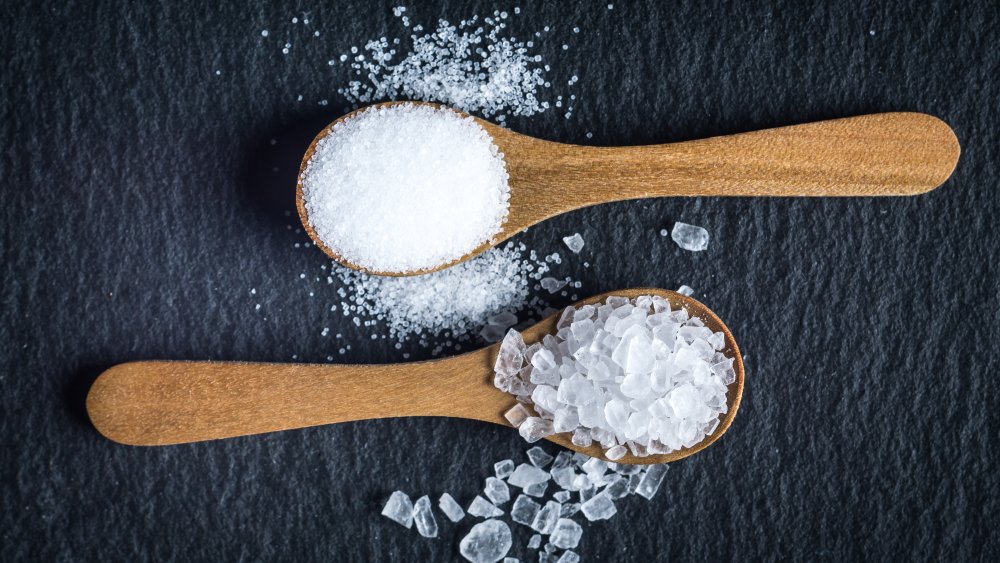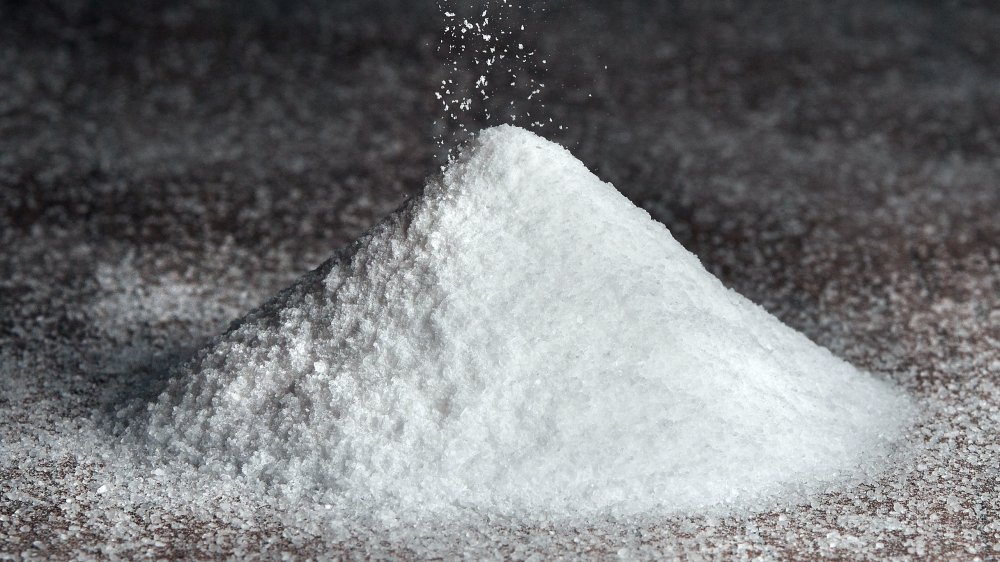The Real Difference Between Table Salt And Sea Salt
You might think when you're cooking that salt is salt is salt, right? All the recipes calling for a specific type are being overly picky and snooty. Who can even tell which type you used once it's in the dish? Unfortunately for those of you trying to maximize cabinet space and minimize your grocery budget, there are actually huge differences when it comes to using table salt or sea salt for a recipe. Use the wrong one or substitute incorrectly and you could end up with bland, boring food or something so salty you have to throw it away and start from scratch.
According to The Kitchn, all salt is sodium chloride (or NaCl) and comes from the sea. Sea salt is made by drying seawater and then either refining it to strip out all the minerals, algae, and whatever else the seawater left behind, or leaving it unrefined, which is how you get gray salt and other types of sea salts specific to certain areas or bodies of water. Sea salt also varies in texture and crystal size, depending on how the salt is dried and collected.
Table salt is made from mined salt deposits, which are created when older bodies of saltwater evaporate. Table salt is always refined to remove any leftover minerals and contaminants, and then sometimes has iodine or anti-caking agents added to it. Table salt is generally denser than sea salt as well due to the way it is evaporated.
You can swap table salt and sea salt when cooking
The American Heart Association states that one big difference between table salt and sea salt is the sodium content. While both salts have the same amount of sodium by weight, many recipes call for ingredients to be measured by volume. Since sea salt is more likely to have larger crystals or flakes than table salt, you will actually be getting less salt in a tablespoon of sea salt than you will in a tablespoon of table salt, and therefore less sodium. This includes fine sea salt, though to a lesser degree, since table salt's evaporation method makes it denser, as mentioned above.
Cooks Illustrated offers some handy tips for swapping out the salts for one another if you're in a pinch and unable to go get the correct type of salt for your recipe. They assert that these substitutions do not work as well for baking as they do for cooking, simply because sea salt does not dissolve as easily as table salt, so sub for your cakes and brownies at your own risk. You will also need to know in general how big your salt crystals are so you choose the correct substitution amount. To replace one tablespoon of table salt, you can use 1 1/2 tablespoons fleur de sel or 2 tablespoons of Maldon Sea Salt.
Not sure what type of salt you have? Country Living has a handy guide of 12 common salt types with photographs.

